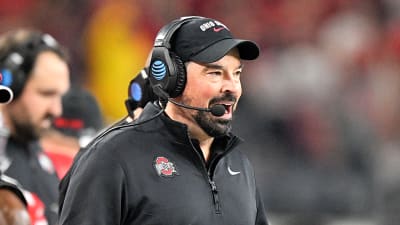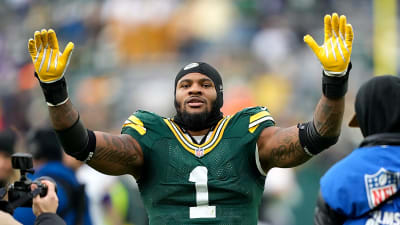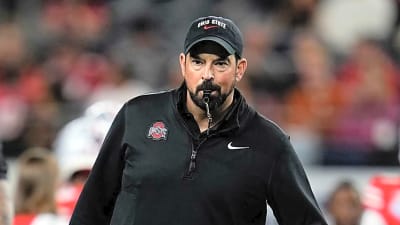[Editor’s Note: The following is an excerpt from the latest print issue of SURFER. Yes, print! In its pages, you’ll find features on the next generation of female shredders, advice on surfing into your twilight years, the best surf photos from across the globe, the rise of wave pools, of alternative crafts, a journey through Africa’s wildest surf destinations, and more. This is just a sample; for the full meal, purchase the new issue of SURFER here.]
In 1985, a 12-year-old Rob Machado was earning his stripes at Swamis, North County San Diego’s premier righthand point. During those formative sessions, there were often two men surfing circles around the young goofy-foot. One of them had long hair, never wore a leash and rode a bonzer. Machado couldn’t stop watching.
“He just had this impeccable flow about him,” Machado recalled four decades later. “He always was on these beautiful little double-ups peeling across the reef. Amazing wave selection. I marveled that he was on the best waves. And he never fell. He had an ability to read a wave and find a flow. There were a couple of guys who had that, and I think that had a big impact on me as a kid.”
As Machado’s recollection illustrates, choosing the right board for the right day is not a new concept in surfing. Dave Parmenter emphasized as much when he famously paddled out on a longboard for his heat at Huntington Beach during the 1988 OP Pro. But this theme goes back long before that. It’s the same spirit in which Tom Blake put a speedboat keel onto the bottom of his board in 1935, or when Californians realized longboards wouldn’t cut it on the North Shore in the 1950s. It’s the same drive that propelled George Greenough to revolutionize the relationship between a board and its fin, Mark Richards to twin-fin excellence, Simon Anderson to create the thruster and Kelly Slater to push board design into the potato chip margins. How can I make this better?
But whether it’s the surge of surfers since the pandemic in 2020 or people just not caring how they’re perceived or something else altogether, the line between what’s in, what’s out and what’s considered cool in lineups is more blurred than ever. Machado now builds and sells the wide-point forward, foam-positive hybrids once thought mere novelty in the 1990s.
“You’re not overperforming in one place and having the wave peel off without you,” Machado said of his current performance preferences, regardless of craft. “You push the board to its farthest place and come out of the turn with speed and link it to the next thing. When I see someone put together a complete ride, I love it. And that can be across the board. An 11’1” Skip Frye, a 4’10” fish or a high-performance thruster. I just get excited. I can’t put a name on it because it happens when I least expect it. You just know.”
While there have always been pockets of resistance against dominant surfboard trends, it seems like the only constant these days is the lack of a trend. Of course, lineups are not free-for-alls, and some waves demand certain attire for entry. For example, when was the last time you saw a longboard at Lower Trestles? (Besides Joel Tudor, of course.)
Today’s combination of relaxed attitudes toward quivers and a democratized board-building market means that many stigmas of the past are in the rearview. This trend touches professionals as well as the average surfer. But why is that the case? Devon Howard, who heads marketing for Channel Islands Surfboards, believes it to be a confluence of factors. The appeal for something in between a longboard and a shortboard, what could be called a mid-length, has been around a long time, said Howard, who knows a thing or two about high-level longboarding as he was a Donald Takayama team rider for 25 years. His theory is that the way surfing is now consumed through the internet means that trends and themes are no longer filtered by surfing’s historic gatekeepers.
“At Channel Islands, we’re known for 20 world titles on shortboards,” he said. “We’re known as a leading performance brand, yet our top videos on YouTube are people riding mid-lengths. It’s so interesting. It tells us there’s a bigger audience out there than we’ve previously given credit for.”
The internet shows where the eyeballs are. But is it just a well-curated algorithm steering the ship? Not necessarily, according to Howard. “I didn’t think it’s just because stylish surfers put some videos up,” he said. “That got you there, but why are you still watching? A cynical surfer will say they’re going straight and not doing much. But if it’s boring, why are so many people watching it?”
Howard is well aware of the stigma around mid-lengths. He’s heard all the jokes from the shortboard-centric crowd. And yet there is something objectively compelling about watching Mikey February carve extra foam into an open face. The same goes for Torren Martyn parking his elongated channel-bottom twin in the tube.
“Mid-lengths sort of force you to show your style. It’s like a byproduct,” Howard said. “The form follows the function. To get the board off the bottom and cut back, you need to have your body in the right position. Kind of like how most people look good while tube riding. It’s because you need to have a certain form to ride it. I think that happens on mid-lengths with how you have to coil up and not have your arms flailing.”
If the average surfer is influenced by the stars, there have never been more options for inspiration. And it’s not just lifelong freesurfers. Two of surfing’s greatest competitors, Mick Fanning and Stephanie Gilmore, with 11 world titles between them, have been all too happy to experiment with different shapes after they left the tour. Now, their quivers are looser, literally and figuratively. Though they still rock three fins when it suits them, they're eager to jump on something different.
This notion of a well-rounded quiver has been around for a long time. But in the last two decades, numerous surfers could take credit for helping percolate the idea. Certainly, Dave Rastovich, Joel Tudor, Dan Malloy, Alex Knost and Kassia Meador, and more featured in Thomas Campbell’s 2004 Sprout brought their own dish to the party.
Going back further, Tom Curren was known for unique shapes in the 1980s. From his experiments with Fireball Fishes, Black Beauties, reverse vees, and whatever that weird cork/skimboard hybrid is, countless surfers have followed in his wake. But with the modern explosion of social media, effectively democratizing surf content, there’s never been more exposure of a wider spectrum of surfboards and those who rip them. Ryan Burch, Bryce Young, Victor Bernardo, Harrison Roach, Tyler Warren, Corey Colapinto and Jaleesa Vincent are just a few following Curren’s curious path. You never know what they’ll pull out of their board bags. There are even finless aficionados in Ari Browne, Jordan Rodin and Beau Cram. The momentum hasn’t gained steam. It has left the station.
The most well-known figure in this movement has to be South Africa’s Mikey February. In Now Now Media’s Changing Tempo, the 31-year-old offers a dazzling display of versatility in Skeleton Bay, Mozambique and South Africa. But it’s the variability in his equipment that draws the eye. Longboards, single fins, mid-lengths, twins and thrusters all make an appearance. No surprises here — February rides them exceptionally, testing them in proper, tapered walls and powerful southerlies that batter the end of the continent. He credits working with Channel Islands Surfboards head shaper Britt Merrick on his signature Twin Pin for deepening his relationship with unconventional craft.
For more, purchase the latest issue of SURFER here.
More must-reads:
- Giannis Antetokounmpo says the quiet part out loud after Bucks' stunning loss to lowly Wizards
- Shedeur Sanders, other Browns players open up about Kevin Stefanski amid rumors
- The 'Leading receivers vs. each NFL team' quiz
Breaking News
Trending News
Customize Your Newsletter
 +
+
Get the latest news and rumors, customized to your favorite sports and teams. Emailed daily. Always free!








